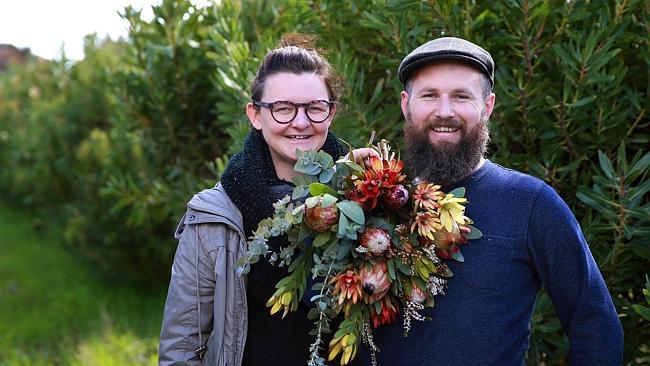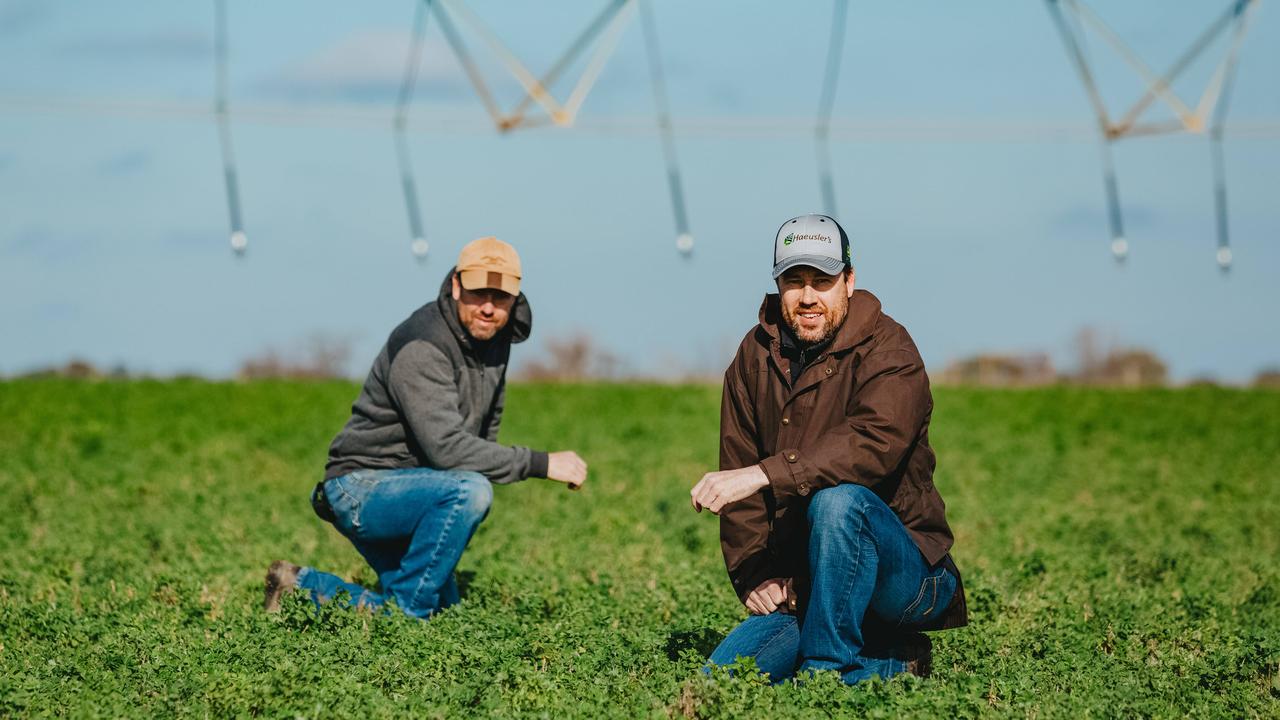Native gatherers: Empire Proteas a tribute to Peter Richardson’s father
THE prehistoric protea is a battler of a bloom, outliving dinosaurs, ice ages and continental drift. Growers Peter Richardson and Emma Conoley tell SARAH HUDSON how they meet its simple needs.
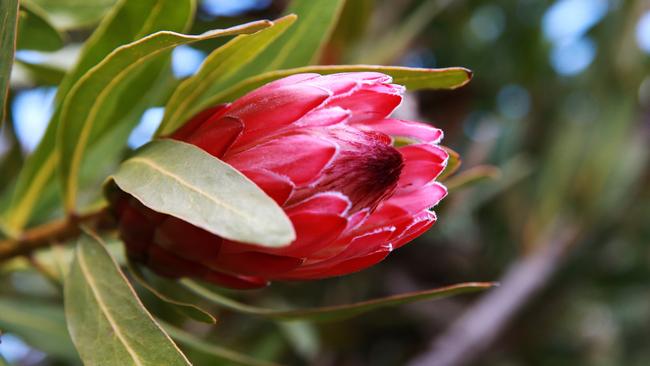
IF FLOWERS existed in the era of dinosaurs, they would have been proteas.
The protea combines beauty with a chunky hardiness, and is far from the delicacy of an English country rose.
Peter Richardson from Empire Proteas in Oaklands, southern NSW, agrees, saying most plant-lovers recognise the species as being a native of southern Africa.
“But it’s part of the same family as waratahs, banksias and grevilleas,” the 30-year-old says. “There are about 141 species of protea and while many are in South Africa, Australia has a lot too. That’s because they were on the supercontinent Gondwana. And, when it split, half stayed here and the other half went to Africa. That’s the more simplified version, anyway.”
The existence of Gondwana and its break-up may be Jurassic history, but the prehistoric flower is certainly alive and well on the two-hectare property Peter farms with his partner, Emma Conoley.
Empire Proteas has about 500 protea plants, which each produce 50-80 flowers a year when fully mature, to total 10,000-15,000 flowers.
The couple are in a re-growing phase and, with new plantings, hope to double that to 30,000 within five years.
Their seven protea varieties result in a staggered harvest, starting with Pink Ice in mid-March and ending with Princess in late September. Additional plantings will introduce new species and extend the harvest period into summer.
Keeping with the Gondwana theme, Peter and Emma also grow about 40 banksias, 100 leucadendron and 12 Geraldton wax trees for foliage as well as 10 thryptomene plants.
They plan to extend this native theme to include flannel flower, kangaroo paw and various eucalyptus.
“I said to Emma, ‘Do you want to grow roses or something else?’,” Peter says. “And she said, ‘If we’re doing natives, we’ll do it properly’, so we’re sticking to one specialty.
“It’s a bit of a gamble because while natives might be popular now, in five years they may fall out of fashion.”
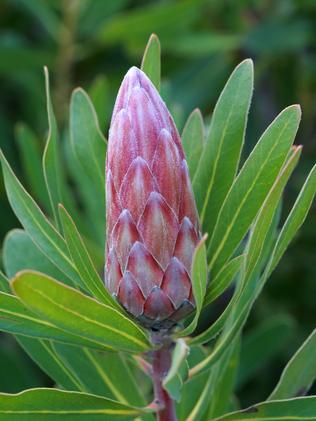
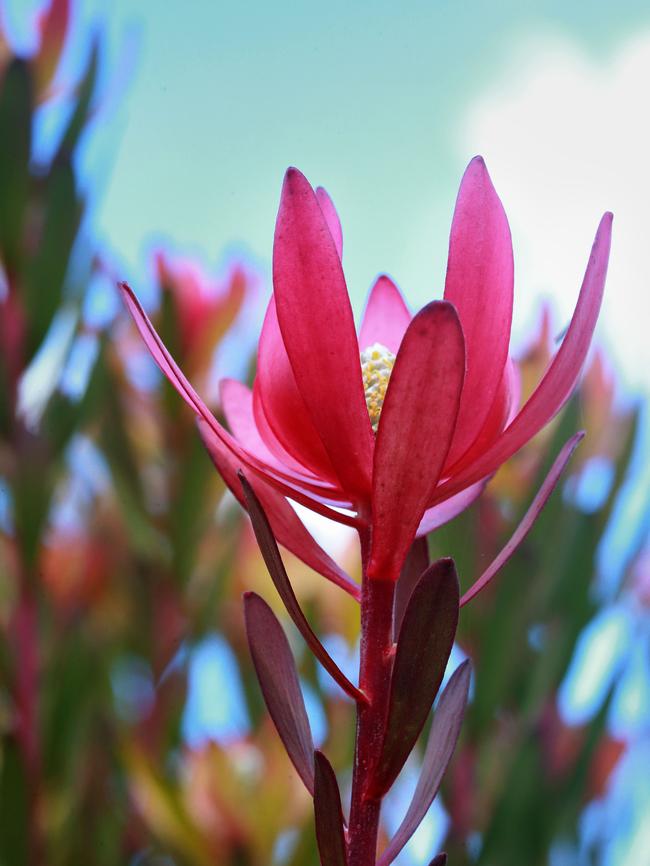
It’s particularly a gamble for the couple who took over the 20-year-old farm just last year after family tragedy.
Peter says his father, Ron, first planted the proteas two decades ago as a retirement plan to follow his career as a bricklayer.
“He was still bricklaying until the age of 73 so it didn’t turn out as he planned,” Peter says.
One of four sons, Peter recalls clearing weeds and digging trenches as a 10-year-old when his father bought the property.
“My brothers and I dug 26 trenches by hand, which were 200m long, for irrigation and to plant the trees,” he says. “He never actually told me why proteas. He always enjoyed the flowers but because he sold them at markets he enjoyed talking with people. He was one of those characters at the market. He’d give flowers to the hospital or if there was someone who needed cheering up, he’d give them a flower.
“It was a very unusual business plan, especially for a bricklayer.”

Ron planted the trees at two-metre intervals, with rows about 3.5 metres wide, initially adding spray irrigation but changing to drip for water sustainability.
Peter says his father became increasingly sick with blood cancer, and was not able to manage the proteas over the past two years. It was then he and Emma decided to return to Oaklands to help Ron. The couple bought the business before Ron passed away last year.
Peter has an IT degree but found it difficult to get a job after the global financial crisis of 2008 and was working in retail in Sydney instead, while Emma was a medical secretary.
“We lived at Coogee Beach but I was working night shift and would get home at 2am and Emma would leave at 7am so it wasn’t a great lifestyle,” Peter says. “We saw the potential in flowers, particularly as a business that can work with a family.”
And now Emma is expecting their first child, family-friendly concerns are more important.
Proteas generally flower for 20 years and the couple are planting new 30cm-tall seedlings, with plans to buy more property and increase the business. Peter continues to work full-time in retail in Yarrawonga while the farm business grows.


Given the protea has successfully outlived the dinosaurs, they are obviously a hardy, low-maintenance plant. Aside from frosts and severe heat, proteas will survive most conditions. Once planted, mulch is added and a light watering, “and that’s pretty much it,” Peter says.
Proteas don’t like heavy fertiliser, so they apply just a handful of native fertiliser in October before rain.
The plants are susceptible to root rot from damp soil but luckily the Oaklands farm has well-drained sandy soil.
In summer, the protea plants each receive a weekly water of up to 12 litres. Otherwise there are no pest or disease problems, with a precautionary dip of the secateurs in antibacterial cleanser between cuttings.
Even better, Peter – who has learnt on the job through trial and error – says harvesting doubles as pruning, with flowers cut twice a week in season.
Flowers are currently sold at farmers’ markets in Albury-Wodonga, Yarrawonga, Chiltern and Rutherglen, selling for $2-$4 each and foliage priced at $6 a bunch. Flowers are also sold through florists in the region. Once full production is reached, the couple will sell through wholesale markets as well.
Peter says Empire Proteas is as much a tribute to his father as a lifestyle he now enjoys with Emma.
“I’m looking forward to taking my child out picking as I did with my dad,” he says.
FARM FACTS - Empire Proteas
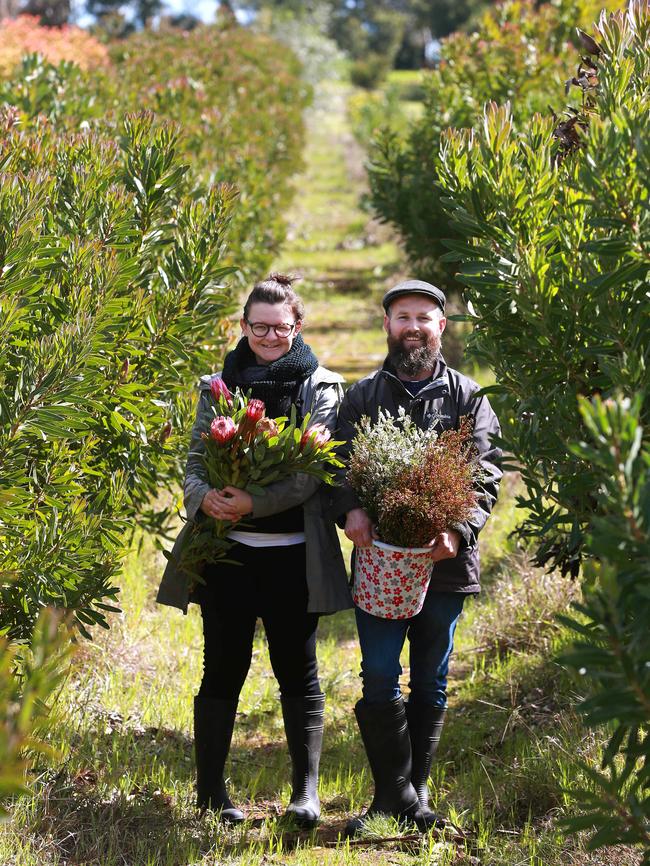
Peter Richardson farms Empire Proteas with his partner, Emma Conoley, on two hectares at Oaklands, southern NSW.
Empire Proteas has about 500 protea plants which produce about 10,000-15,000 flowers annually. The couple are currently in a re-growing phase and hope to double production to 30,000 within five years.
They grow seven protea varieties, including Pink Ice and Princess, harvesting from March to September.
They also farm banksias, leucadendron, thryptomene plants and Geraldton wax trees, with plans to add flannel flower, kangaroo paw and various eucalyptus.
Flowers are sold at farmers’ markets in Albury-Wodonga, Yarrawonga, Chiltern and Rutherglen as well as through florists.
Numbers game
• Peter and Emma’s 500 protea plants each produce 50 to 80 flowers a year, totalling 10,000-15,000 flowers annually.
• 40 banksias each yield up to 60 flowers a year.
• 100 leucadendron produce about 5000 flowers in total. The couple hopes new plantings will increase that number to 40,000.
• 12 Geraldton wax trees produce about 300 bunches of foliage a year.
• 10 thryptomene shrubs yield about 200 bunches of the tiny blossoms.
Peter Richardson and Emma Conoley are in the running to be The Weekly Times Coles 2016 Farmer of the Year. For more information, visit theweeklytimes.com.au

